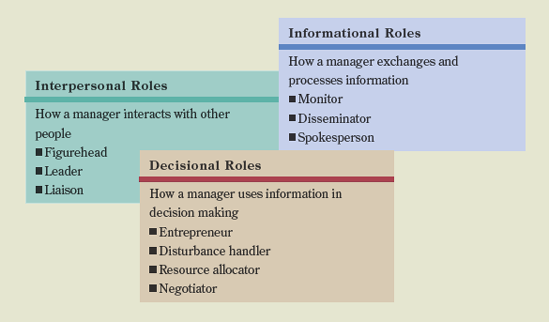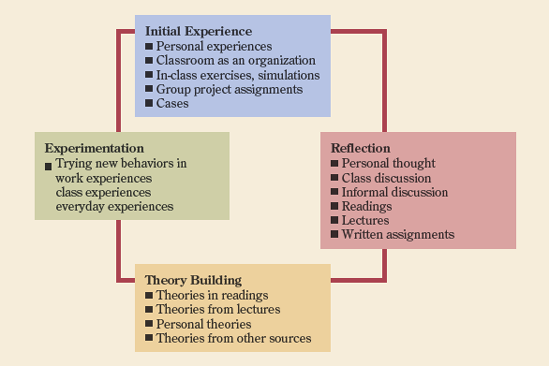chapter at a glance
People in all of their rich diversity are the basic building blocks of organizations. The field of organizational behavior offers many insights on managing individuals and teams for high performance. Here's what to look for in Chapter 1. Don't forget to check your learning with the Summary Questions & Answers and Self-Test in the end-of-chapter Study Guide.
WHAT IS ORGANIZATIONAL BEHAVIOR AND WHY IS IT IMPORTANT?
Importance of Organizational Behavior
Scientific Foundations of Organizational Behavior
Shifting Paradigms of Organizational Behavior
WHAT ARE ORGANIZATIONS LIKE AS WORK SETTINGS?
Organizational Purpose, Mission, and Strategy
Organizational Environments and Stakeholders
Organizational Cultures
Diversity and Multiculturalism
WHAT IS THE NATURE OF MANAGERIAL WORK?
The Management Process
Managerial Activities, Roles, and Networks
Managerial Skills and Competencies
Moral Management
HOW DO WE LEARN ABOUT ORGANIZATIONAL BEHAVIOR?
Learning and Experience
Learning Styles
Learning Guide to Organizational Behavior 11/E
Sweet Sixteen. Final Four. Lakers and Cavaliers. LeBron James and Yao Ming ... At a certain time of the year, it's basketball time, and this is a basketball story. Interestingly enough, it begins with something you might think is unheard of—a new basketball. That's right, not too long ago the National Basketball Association decided that the league needed a new ball. As it turns out, it's now called by many "the ball that just didn't bounce."
You wouldn't think a new basketball would make much of a difference. But this one did. In fact, it set the executives running the National Basketball Association back on their heels. When the NBA introduced a new microfiber ball, they thought its consistent bounce would be the pathway toward better shooting, higher scoring, and improved player statistics. Instead, the new synthetic ball was met with skepticism and even outright scorn by players who preferred the traditional leather ball. LeBron James, Shaquille O'Neal, and Jason Kidd were among those who publicly declared their dislike for the new ball.
The players' union was quick to file a grievance, claiming that the surface of the new ball contributed to increased skin abrasions. The old ball, with its leather construction, was praised as a better alternative, and the NBA was faced with a dilemma—stick with the new ball or revert to the old one. How did the NBA get into this spot?
The answer rests with this comment by NBA Commissioner David Stern when he announced the return to the leather ball: "We've got to do the right thing here. And, of course the right thing is to listen to our players." And listen he did. But, shouldn't it be asked: Why so late in the process?
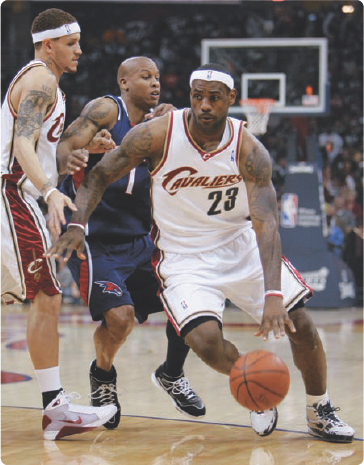
"... we're dealing with this. In hindsight we could have done a better job."
Complaints made clear the NBA didn't spend enough time getting player input before making a decision to switch to the new ball. Houston player Rafer Alston said: "They said, 'The ball's here. This is what we're going to use.' ... There was never a reason or anything." As for Stern, he said: "Whether it's a day late or not, we're dealing with this ... In hindsight we could have done a better job."
It would seem that a better understanding of human behavior in organizations might have gone a long way in making such hindsight unnecessary. In other words: why can't we more often do things right the first time?
people make the difference
Stern's lesson in the case of the NBA's attempt to introduce a new basketball is a classic one: when it comes to dealing with people in organizations, it's always better to interact before you act. And when the NBA tinkered with the basketball, it was striking at the core of player confidence and performance. As LeBron James said when the smoke cleared and the leather ball was back: "For the league to be successful, obviously the players have to be happy. The basketball is the most important thing to us."[61]
Whether your career unfolds in entrepreneurship, corporate enterprise, public service, or any other occupational setting, it is always worth remembering that people are the basic building blocks of organizational success. Organizations do well when the people in them work hard to achieve high performance as individuals and as members of teams. Creating success in and by organizations, therefore, requires respect for everyone's needs, talents, and aspirations, as well as an understanding of the dynamics of human behavior in organizational systems.
This book is about people, everyday people like you and like us, who work and pursue careers in today's new and highly demanding settings. It is about people who seek fulfillment in their lives and jobs in a variety of ways and in uncertain times. It is about the challenges of ethics, globalization, technology utilization, diversity, work-life balance, and other issues of the new workplace. And this book is also about how our complex environment requires people and organizations to learn and to continuously develop themselves in the quest for high performance and promising futures.
In this challenging era of work and organizations, the body of knowledge we call "organizational behavior" offers many insights of great value. Called OB for short, organizational behavior is the study of human behavior in organizations. It is an academic discipline devoted to understanding individual and group behavior, interpersonal processes, and organizational dynamics with the goal of improving the performance of organizations and the people in them. Learning about OB can help you develop a better work-related understanding of yourself and others; it is a knowledge platform that can expand your potential for career success in the dynamic, shifting, and complex new workplaces of today—and tomorrow.
Organizational behavior is the study of individuals and groups in organizations.
As far back as a century ago, consultants and scholars were giving increased attention to the systematic study of management. Although the early focus was initially on physical working conditions, principles of administration, and industrial engineering principles, interest soon broadened to include the human factor. This gave impetus to research dealing with individual attitudes, group dynamics, and the relationships between managers and workers. From this foundation, organizational behavior emerged as a scholarly discipline devoted to scientific understanding of individuals and groups in organizations and of the performance implications of organizational processes, systems, and structures.[62]
Interdisciplinary Body of Knowledge Organizational behavior is an interdisciplinary body of knowledge with strong ties to the behavioral sciences—psychology, sociology, and anthropology—as well as to allied social sciences such as economics and political science. OB is unique, however, in its goals of integrating the diverse insights of these other disciplines and applying them to real-world problems and opportunities. The ultimate goal of OB is to improve the performance of people, groups, and organizations and to improve the quality of work life overall.
Use of Scientific Methods The field of organizational behavior uses scientific methods to develop and empirically test generalizations about behavior in organizations. OB scholars often propose and test models—simplified views of reality that attempt to identify major factors and forces underlying real-world phenomena. These models link independent variables—presumed causes—with dependent variables—outcomes of practical value and interest. Here, for example, is a very basic model that describes one of the findings of OB research—job satisfaction (independent variable) influences absenteeism (dependent variable).

Notice that " + " and "−" signs in the above model also indicate that as job satisfaction increases, absenteeism tends to go down, and as job satisfaction decreases, absenteeism often goes up. As you look at this model you might ask what other dependent variables are important to study in OB—perhaps things like task performance, ethical behavior, work stress, and leadership effectiveness. In fact, job satisfaction can be a dependent variable in its own right. What independent variables do you believe might explain whether it will be high or low for someone doing a service job like an airline flight attendant or a managerial one like a school principal?
Figure 1.1 describes a set of research methods commonly used by OB researchers. They are based on scientific thinking, which means that (1) the process of data collection is controlled and systematic, (2) proposed explanations are carefully tested, and (3) only explanations that can be rigorously verified are accepted.
Focus on Application As already suggested, the science of organizational behavior focuses on applications that can make a real difference in how organizations and people in them perform. Examples of the many practical questions addressed by the discipline of OB and reviewed in this book include: How should rewards such as merit pay raises be allocated? How can jobs be designed for both job satisfaction and high performance? What are the ingredients of successful teamwork? How can a manager deal with resistance to change? Should leaders make decisions by individual, consultative, or group methods? How can "win-win" outcomes be achieved in negotiations? What causes unethical and socially irresponsible behavior by people in organizations?
Contingency Thinking Rather than assuming that there is one "best" or universal answer to questions such as those just posed, OB recognizes that management practices must be tailored to fit the exact nature of each situation—this is called contingency thinking. In fact, one of the most accepted conclusions of scientific research to date is that there is no single best way to manage people and organizations. Said a bit differently, contingency thinking accepts that there are no cookie-cutter solutions that can be universally applied to common organizational problems. Managers must be able to understand the challenges and demands of different situations and craft responses to them that best fit the circumstances and people involved. And this is where solid scientific findings in organizational behavior become very helpful.
An essential responsibility of the science of organizational behavior, in fact, is to create and test models that offer evidence-based foundations for decision making and action. A book by scholars Jeffrey Pfeffer and Robert Sutton define the evidence-based approach as making decisions on "hard facts"—that is about what really works, rather than on "dangerous half-truths"—things that sound good but lack empirical substantiation.[63] One of the ways evidence-based thinking manifests itself in OB is through a contingency approach in which researchers identify how different situations can best be understood and handled.
In a time of complex globalization, for example, it's important for everyone from managers to government leaders to understand how OB theories and concepts apply in different countries.[64] Although it is relatively easy to conclude that what works in one culture may not work as well in another, it is far harder to describe how specific cultural differences can affect such things as motivation, job satisfaction, leadership style, negotiating tendencies, and ethical behavior. Fortunately, OB is now rich with empirically based insights into cross-cultural issues.
With the recent economic turmoil, financial crisis, and recession, there isn't any doubt that organizations and their members now face huge challenges. You'll notice organizations adopting new features, approaching work processes in new ways, and trying different strategies for serving customers and clients whose tastes, values, and needs are shifting as well.
Things have actually been changing for quite some time in our work environments, but recent events are especially dramatic in affecting both the nature and pace of change. The comments of consultant Tom Peters, while offered some time ago, seem even more relevant now. He called the changing environment of organizations a "revolution that feels something like this: scary, guilty, painful, liberating, disorienting, exhilarating, empowering, frustrating, fulfilling, confusing, and challenging. In other words, it feels very much like chaos."[65]
The environment of change in which we now live and work requires lots of learning and continuous attention. Among the trends affecting OB are these shifting paradigms in what many people expect and value in terms of human behavior in organizations.[66]
Commitment to ethical behavior: Highly publicized scandals involving unethical and illegal business practices prompt concerns for ethical behavior in the workplace; there is growing intolerance for breaches of public faith by organizations and those who run them.
Importance of human capital: A dynamic and complex environment poses continuous human resource challenges; sustained success is earned through knowledge, experience, and commitments to people as valuable human assets of organizations.
Demise of command-and-control: Traditional hierarchical structures are proving incapable of handling new environmental pressures and demands; they are being replaced by flexible structures and participatory work settings that fully value human capital.
Emphasis on teamwork: Organizations today are designed to be less vertical and more horizontal in nature; driven by complex environments and customer demands, work is increasingly team based with a focus on peer contributions.
Pervasive influence of information technology: As computers and communication technologies penetrate all aspects of the workplace, implications for workflows, work arrangements, and organizational systems and processes are far-reaching.
Respect for new workforce expectations: The new generation of workers is less tolerant of hierarchy, more informal, and less concerned about status; organizations are paying more attention to helping members balance work responsibilities and personal affairs.
Changing concept of careers: The new realities of a global economy find employers using more "offshoring" and "outsourcing" of jobs as well as cutting back their workforces and employee benefits; more people are now working as independent contractors who shift among employers rather than holding a traditional full-time jobs.
Concern for sustainability: Rising quickly to the forefront of concerns in today's world, issues of sustainability are more and more on the minds of managers and organization members; decision making and goal setting in organizations increasingly gives attention to the environment, climate justice and preservation of resources for future generations.
In order to understand the complex field of forces that relate to human behavior in organizations, we need to begin with the nature of the "organization" itself. Simply stated, an organization is a collection of people working together in a division of labor to achieve a common purpose. This definition describes everything from clubs, voluntary organizations, and religious bodies to entities such as small and large businesses, labor unions, schools, hospitals, and government agencies. All such organizations share a number of common features that can help us better understand and deal with them.
Organizations are collections of people working together to achieve a common purpose.
The core purpose of an organization may be stated as the creation of goods or services for customers. Nonprofit organizations produce services with public benefits, such as health care, education, judicial processing, and highway maintenance. Large and small for-profit businesses produce consumer goods and services such as automobiles, banking, travel, gourmet dining, and accommodations. Yet, as we all know, not all organizations of the same type pursue their purposes in the same ways or with equal success.
One way organizations differ is how their purposes are expressed with a sense of mission. Robert Reich, former U.S. Secretary of Labor, once said: "Talented people want to be part of something that they can believe in, something that confers meaning on their work, on their lives—something that involves a mission."[67] A mission statement describes and helps focus the attention of organizational members and external constituents on the organization's core purpose.[68] Ideally, it does so in a way that communicates to employees, customers, and the general public a sense of uniqueness for an organization and its products and services. And, it should provide a vision and sense of future aspiration.[69]
A mission statement describes the organization's purpose for stakeholders and the public.
Google's mission statement is simple, clear, and compelling: "to organize the world's information and make it universally accessible and useful." Compare that statement with those that follow. As you read, ask which, if any, communicates in a way that would make people want to join the organization and, as Reich says, "be part of something they can believe in."[70] Merck—"to discover, develop, manufacture and market a broad range of innovative products to improve human and animal health." AT&T—"to be the most admired and valuable company in the world." New Balance—"to build global brands that athletes are proud to wear, associates are proud to create and communities are proud to host." Amnesty International—"to undertake research and action focused on preventing and ending grave abuses of the rights to physical and mental integrity, freedom of conscience and expression, and freedom from discrimination ..."
Given a sense of purpose and mission, organizations pursue strategies to accomplish them. A strategy is a comprehensive plan that guides an organization to operate in ways that allow it to outperform competitors. The variety of mergers, acquisitions, joint ventures, global alliances, and even restructurings and divestitures found in business today are examples of corporate strategies to achieve and sustain advantage in highly competitive environments.[71]
Strategy guides organizations to operate in ways that outperform competitors.
All organizations need good strategies; but strategy alone is no guarantee of success. Sustainable high performance is achieved only when strategies are both well chosen and well implemented. And it is in respect to implementation that understanding organizational behavior becomes especially important. After all, things happen in organizations because people working individually and in teams make them happen; as the chapter subtitle indicates, people really do make the difference. Armed with an understanding of the dynamics of human behavior in organizations, managers are well prepared to mobilize human capital and apply a great diversity of talents to best implement strategies to fulfill the organization's mission and purpose.
The concept of strategy places great significance on the relationship between an organization and its external environment. As shown in Figure 1.2, organizations are dynamic open systems that obtain resource inputs from the environment and transform them into finished goods or services that are returned to the environment as product outputs.
If everything works right from an open systems perspective, suppliers value the organization as their customer and continue to provide needed resources, employees value their work opportunities and continue to infuse the transformation processes with their energies and intellects, and customers and clients value the organization's outputs and create a continuing demand for them. This is the concept of a value chain, or sequence of activities that results in the creation of goods and services of value to customers. It begins with the acquisition of inputs, continues through their transformation into product outputs, and ends when customers and clients are well served.
The value chain is a sequence of activities that creates valued goods and services for customers.
When the value chain is well managed, the organization as an open system is able to sustain operations and, hopefully, prosper over the long run. But if and when any aspect of this value chain breaks down due to input problems, transformation problems, or output problems, an organization's performance suffers and its livelihood may be threatened. In extreme cases such as those of General Motors and Chrysler in the recent economic downturn, the organization can be forced into bankruptcy or even go out of existence all together.
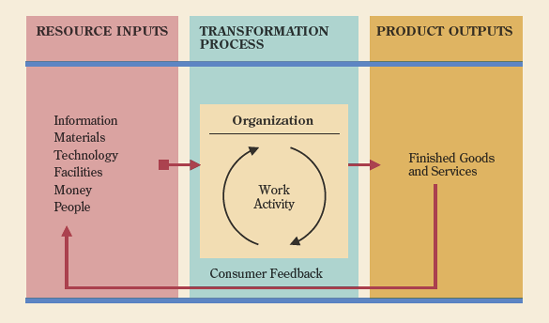
Figure 1.2. Organizations are open systems that create value while interacting with their environments.
One way to describe and analyze the external environment of organizations is in terms of stakeholders—people, groups, and institutions that are affected by and thus have an interest or "stake" in an organization's performance. It is common in OB to recognize customers, owners, employees, suppliers, regulators, local communities, and future generations among the key stakeholders of organizations. And although an organization should ideally operate in ways that best serve all stakeholders, the realities are that conflicting interests can create challenges for decision makers. Consider, for example, the possibilities for conflict among these stakeholder interests—customers want value pricing and high-quality products, owners want profits and returns on investments, employees want secure jobs with good pay and benefits, suppliers want reliable contracts and on-time payments, regulators want compliance with all laws, local communities want good organizational citizenship and community support, and future generations want environmental protection and sustainability of natural resources.
In the internal environment of organizations, the shared beliefs and values that influence the behavior of organizational members create what is called the organizational culture.[72] Former eBay CEO Meg Whitman calls it the "character" of the organization. She says organization culture "means the set of values and principles by which you run a company" and becomes the "moral center" that helps every member understand what is right and what is wrong in terms of personal behavior.[73]
Organizational culture is a shared set of beliefs and values within an organization.
If you're at all unsure about the importance of organizational culture, consider this example from Procter & Gamble. The firm gets some 400,000 applications for entry-management positions each year and hires about 4,000. P&G's CEO Robert McDonald points out that only applicants expected to be a good fit with the culture get hired; "We actually recruit for values," he says.[74] Organizations with "strong cultures" such as P&G operate with a clear vision of the future that is supported by well-developed and well-communicated beliefs and values, as well as a high-performance orientation. Even high-level managers at P&G can be found in people's homes learning how they live, clean, and cook with the firm's products. The program is called "live it, work it."[75]
Figure 1.3 shows an approach for mapping organizational cultures developed by Human Synergistics and using an instrument called the Organizational Culture Inventory, or OCI.[76] The OCI asks people to describe the behaviors and expectations that make up the prevailing cultures of their organizations, and the results are mapped into three culture types.[77] In a constructive culture members are encouraged to work together in ways that meet higher order human needs. In a passive/defensive culture members tend to act defensively in their working relationships, seeking to protect their security. In an aggressive/defensive culture members tend to act forcefully in their working relationships to protect their status and positions.
Among these three types of organizational cultures, the constructive culture would be most associated with high-performance organizations. In constructive cultures people tend to work with greater motivation, satisfaction, teamwork, and performance. In passive/defensive and aggressive/defensive cultures motivation tends to be lower and work attitudes less positive.[78] The expectation is that people prefer constructive cultures and behave within them in ways that fully tap the value of human capital, promoting both high-performance results and personal satisfaction.
Within the internal environments of organizations, workforce diversity describes the presence of individual differences based on gender, race and ethnicity, age, able-bodiedness, and sexual orientation.[79] As used in OB, the term multiculturalism refers to inclusion, pluralism, and genuine respect for diversity and individual differences.[80] And when it comes to people and their diversity, consultant R. Roosevelt Thomas makes the point that positive organizational cultures tap the talents, ideas, and creative potential of all members.[81] An extensive discussion of diversity and individual differences in the next chapter further addresses this theme.
Workforce diversity describes how people differ on attributes such as age, race, ethnicity, gender, physical ability, and sexual orientation.
Multiculturalism refers to pluralism and respect for diversity in the workplace.
The demographic trends driving workforce diversity in American society are well recognized. There are more women working than ever before in our history: They earn 60 percent of college degrees and fill a bit more than half of managerial jobs.[82] The proportion of African-Americans, Hispanics, and Asians in the labor force is increasing. By the year 2060, people of color will constitute over 60 percent of the U.S. population; close to 30 percent of the population will be Hispanic.[83]
But trends alone are no guarantee that diversity will be fully valued and respected in the multicultural sense described by Thomas and others.[84] A key element in any organization that embraces multiculturalism is inclusion—the degree to which the culture values diversity and is open to anyone who can perform a job, regardless of their diversity attributes.[85] Valuing diversity is a core OB theme that is central to this book and the new workplace.[86] Yet in practice, valuing diversity must still be considered a work in progress. For example, data show women earning only about 76 cents per dollar earned by men. At Fortune 500 companies they hold only 12 CEO jobs and 6.2 percent of top-paying positions; women of color hold only 1.7 percent of corporate officer positions and 1 percent of top-paying jobs.[87] Indeed, when Ursula Burns was named CEO of Xerox in 2009, she became the first African-American woman to head a Fortune 500 firm.[88]
Regardless of your career direction, the field of organizational behavior will some day be very important as you try to master the special challenges of serving as a manager, someone whose job it is to directly support the work efforts of others. The goal, of course, should be to become an effective manager—one whose team or work unit or total organization consistently achieves its performance goals while members remain capable, enthusiastic, and satisfied in their jobs.
This definition of an effective manager focuses attention on two key outcomes, or dependent variables, that are important in OB. The first outcome is task performance. You can think of it as the quality and quantity of the work produced or the services provided by an individual, team or work unit, or organization as a whole. The second outcome is job satisfaction. It indicates how people feel about their work and the work setting.
OB is quite clear in that managers should be held accountable for both results. The first, performance, pretty much speaks for itself; this is what we at the organization are supposed to accomplish. The second, satisfaction, however, might give you some pause for thought. But just as a valuable machine should not be allowed to break down for lack of proper maintenance, the talents and enthusiasm of an organization's workforce should never be lost or compromised for lack of proper care. In this sense, taking care of job satisfaction today can be considered an investment in tomorrow's performance potential.
Being a manager is a unique challenge with responsibilities that link closely with the field of organizational behavior. At the heart of the matter managers help other people get important things done in timely, high-quality, and personally satisfying ways. And in the workplaces of today this is accomplished more through "helping" and "supporting" than through traditional notions of "directing" and "controlling." Indeed, you'll find the word "manager" is increasingly being replaced by such terms as "coordinator," "coach," or "team leader."
Among the ways that managerial work has been described and taught is through the four functions shown in Figure 1.4: planning, organizing, leading, and controlling. These functions describe what managers are supposed to do in respect to:[89]
Planning—defining goals, setting specific performance objectives, and identifying the actions needed to achieve them
Organizing—creating work structures and systems, and arranging resources to accomplish goals and objectives
Leading—instilling enthusiasm by communicating with others, motivating them to work hard, and maintaining good interpersonal relations
Controlling—ensuring that things go well by monitoring performance and taking corrective action as necessary
Planning sets objectives and identifies the actions needed to achieve them.
Organizing divides up tasks and arranges resources to accomplish them.
Leading creates enthusiasm to work hard to accomplish tasks successfully.
Controlling monitors performance and takes any needed corrective action.
Anyone serving as a manager or team leader faces a very demanding and complicated job that has been described by researchers in the following terms.[90] Managers work long hours; a work week of more than the standard 40 hours is typical. The length of the work week increases at higher managerial levels, and heads of organizations often work the longest hours. Managers are busy people. Their work is intense and involves doing many different things. The typical work day includes a shifting mix of incidents that demand immediate attention, with the number of incidents being greatest for lower-level managers. Managers are often interrupted; their work is fragmented and variable; many tasks must be completed quickly. Managers work mostly with other people and often spend little time working alone. They are communicators and spend a lot of time getting, giving, and processing information in face-to-face and electronic exchanges and in formal and informal meetings.
In what has become a classic study, Henry Mintzberg described how managers perform a set of 10 managerial roles, falling into the three categories shown in Figure 1.5.[91] A manager's interpersonal roles involve working directly with other people, hosting and attending official ceremonies (figurehead), creating enthusiasm and serving people's needs (leader), and maintaining contacts with important people and groups (liaison). The informational roles involve managers exchanging information with other people, seeking relevant information (monitor), sharing it with insiders (disseminator), and sharing it with outsiders (spokesperson). A manager's decisional roles involve making decisions that affect other people, seeking problems to solve and opportunities to explore (entrepreneur), helping to resolve conflicts (disturbance handler), allocating resources to various uses (resource allocator), and negotiating with other parties (negotiator).
Good interpersonal relationships are essential to managerial success in each of these roles. Managers and team leaders need to develop, maintain, and work well in networks involving a wide variety of people, both inside and outside the organization.[92] These include task networks of specific job-related contacts, career networks of career guidance and opportunity resources, and social networks of trustworthy friends and peers.[93] It can be said in this sense that managers must develop and maintain social capital in the form of relationships and networks that they can call upon to get work done through other people.
A skill is an ability to translate knowledge into action that results in a desired performance. Robert Katz divides the essential managerial skills into three categories—technical, human, and conceptual.[94] He further suggests that the relative importance of these skills varies across the different levels of management. Technical skills are considered more important at entry levels of management, where supervisors and team leaders must deal with job-specific problems. Senior executives require more conceptual skills as they face sometimes ambiguous problems and deal with issues of organizational purpose, mission, and strategy.
A skill is an ability to turn knowledge into effective action.
Human skills, which are strongly grounded in the foundations of organizational behavior, are consistently important across all managerial levels.
Technical Skills A technical skill is an ability to perform specialized tasks. Such ability derives from knowledge or expertise gained from education or experience. This skill involves proficiency at using select methods, processes, and expertise in one's job. Perhaps the best current example is skill in using the latest communication and information technologies. In the high-tech workplaces of today, technical proficiency in database management, spreadsheet analysis, presentation software, e-mail and electronic networks, and Internet searches is often a hiring prerequisite. Some technical skills require preparatory education, whereas others are acquired through specific training and on-the-job experience.
Human Skills Central to all aspects of managerial work and team leadership are human skills, or the ability to work well with other people. They emerge as a spirit of trust, enthusiasm, and genuine involvement in interpersonal relationships. A person with good human skills will have a high degree of self-awareness and a capacity for understanding or empathizing with the feelings of others. People with this skill are able to interact well with others, engage in persuasive communications, and deal successfully with disagreements and conflicts.
An important emphasis in this area of human skills is emotional intelligence, or EI. As defined by Daniel Goleman, EI is the ability to understand and deal with emotions. With its focus on managing emotions both personally and in relationships with others, emotional intelligence is now considered an important leadership competency.[95] The core elements in emotional intelligence are:
Self-awareness—ability to understand your own moods and emotions
Self-regulation—ability to think before acting and to control disruptive impulses
Motivation—ability to work hard and persevere
Empathy—ability to understand the emotions of others
Social skill—ability to gain rapport with others and build good relationships
Conceptual Skills In addition to technical and human skills, managers should be able to view the organization or situation as a whole so that problems are always solved for the benefit of everyone concerned. This capacity to think analytically and solve complex and sometimes ambiguous problems is a conceptual skill. It involves the ability to see and understand how systems work and how their parts are interrelated, including human dynamics. Conceptual skill is used to identify problems and opportunities, gather and interpret relevant information, and make good problem-solving decisions.
Having the essential managerial skills is one thing; using them correctly to get things done in organizations is quite another. And when it comes to this issue of ethics and morality, scholar Archie B. Carroll draws a distinction between immoral managers, amoral managers, and moral managers.[96]
![Moral leadership, ethics mindfulness, and the virtuous shift. [Source: Developed from Terry Thomas, John R. Schermerhorn Jr., and John W. Dinehart, "Strategic Leadership of Ethical Behavior in Business," Academy of Management Executive, 18, May 2004, pp. 56–66.]](http://imgdetail.ebookreading.net/business/42/9780470294413/9780470294413__organizational-behavior-11th__9780470294413__figs__0106.png)
Figure 1.6. Moral leadership, ethics mindfulness, and the virtuous shift. [Source: Developed from Terry Thomas, John R. Schermerhorn Jr., and John W. Dinehart, "Strategic Leadership of Ethical Behavior in Business," Academy of Management Executive, 18, May 2004, pp. 56–66.]
The immoral manager doesn't subscribe to any ethical principles, making decisions and acting in any situation to simply gain best personal advantage. This manager essentially chooses to behave unethically. One might describe in this way disgraced executives like Bernard Madoff and others whose unethical acts make headlines. The amoral manager, by contrast, fails to consider the ethics of a decision or behavior. This manager acts unethically at times, but does so unintentionally. Common forms of unintentional ethics lapses that we all must guard against include prejudice that derives from unconscious stereotypes and attitudes, showing bias based on in-group favoritism, claiming too much personal credit for one's performance contributions, and giving preferential treatment to those who can benefit you.[97] Finally, the moral manager is one who incorporates ethics principles and goals into his or her personal behavior. For this manager, ethical behavior is a goal, a standard, and even a matter of routine; ethical reasoning is part of every decision, not just an occasional afterthought.
An immoral manager chooses to behave unethically.
An amoral manager fails to consider the ethics of a decision or behavior.
A moral manager makes ethical behavior a personal goal.
Carroll believes that the majority of managers tend to act amorally. They are well intentioned but often fail to take ethical considerations into account when taking action and making decisions. A review article by Terry Thomas and his colleagues suggests that this pattern may well fit the general membership of organizations.[98] They describe how the "ethics center of gravity" shown in Figure 1.6 can be moved positively through moral leadership or negatively through amoral leadership. In this view, a moral manager or moral leader always acts as an ethical role model, communicates ethics values and messages, and champions ethics mindfulness—an "enriched awareness" that causes one to behave with an ethical consciousness from one decision or behavioral event to another. This results in the "virtuous shift" shown in the figure and helps create an organizational culture in which people encourage one another to act ethically as a matter of routine.
Learning is an enduring change of behavior that results from experience. Our new and rapidly developing knowledge-based world places a great premium on from learning by organizations as well as individuals. Only the learners, so to speak, will be able to maintain the pace and succeed in a high-tech, global, and constantly changing environment. At the individual level, the concept of lifelong learning is important. It involves learning continuously from day-to-day work experiences; conversations with colleagues and friends; counseling and advice provided by mentors, success models, training seminars, and workshops; and other daily opportunities. At the organizational level, consultants and scholars emphasize organizational learning as the process of acquiring knowledge and using information to adapt successfully to changing circumstances.[99] Just like individuals, organizations must be able to change continuously and positively while searching for new ideas and opportunities.
Figure 1.7 shows how the content and activities of the typical OB course can fit together in an experiential learning cycle.[100] The learning sequence begins with initial experience and subsequent reflection. It grows as theory building takes place to try to explain what has happened. Theory is then tested through future behavior. Textbooks, readings, class discussions, and other course assignments and activities should complement one another and help you move through the phases of the learning cycle. With practice, you can make experiential learning part of your commitment to continued personal and career development.
Notice that Figure 1.7 assigns to you a substantial responsibility for learning. Along with your instructor, we can offer examples, cases, and exercises to provide you with initial experience. We can even stimulate your reflection and theory building by presenting concepts and discussing their research and practical implications. Sooner or later, however, you must become an active participant in the process; you and only you can do the work required to take full advantage of the learning cycle.
As you proceed with Organizational Behavior 11/E and your OB course, now is a good time to inquire further into your preferred learning style or tendencies. In the end-of-book OB Skills Workbook, we have included instructions for a Learning Styles self-assessment.[101] If you complete the recommended instrument it will provide feedback on how you like to learn through receiving, processing, and recalling new information. Armed with this understanding, you can take steps to maximize your learning and even course success by studying in ways that best fit your learning style. So, what type of learner are you? The seven learning styles from the assessmentare:[102]
Visual learner—learns by watching and viewing images and diagrams.
Print learner—learns by reading and writing things down.
Auditory learner—learns by listening and repeating verbal presentations.
Interactive learner—learns through conversation and sharing information.
Haptic learner—learns hands-on by drawing and putting things together.
Kinesthetic learner—learns by doing and active involvement.
Olfactory learner—learns through associative senses of smell and taste.
To facilitate your learning, the chapters in Organizational Behavior 11/E are presented in a logical building-block fashion. This first chapter constituting Part 1 has introduced the discipline and context of OB, including its scientific foundations and link with the management process. Part 2 focuses on individual behavior and performance. Key topics include diversity, values, personality, attitudes, emotions, perception, learning, and motivation. Part 3 covers teams and teamwork, including the dynamics of decision making, conflict, and negotiation. Part 4 examines leadership and influence processes, with an emphasis on communication and collaboration, power and politics, and important leadership theories and perspectives. Part 5 discusses the organizational context in respect to organization cultures, structures, designs, and strategic capabilities.
At the end of Part 5 you will find the rich and useful OB Skills Workbook mentioned above. Its purpose is to provide a variety of active opportunities to advance your learning and help you better understand the practical applications of OB. In the workbook are cases for analysis, many team and experiential exercises, and a portfolio of self-assessments that includes the popular Kouzes and Posner "Student Leadership Practices Inventory."
Finally, and as you embark on your introductory study of organizational behavior, remember that OB and the learning it offers has real value and concrete purpose. Think about it this way.

These learning activities from The OB Skills Workbook are suggested for Chapter 1.
Cases for Critical Thinking | Team and Experiential Exercises | Self-Assessment Portfolio |
|---|---|---|
|
|
|
Chapter 1 study guide: Summary Questions and Answers
What is organizational behavior and why is it important?
Organizational behavior is the study of individuals and groups in organizations.
OB is an applied discipline based on scientific methods.
OB uses a contingency approach, recognizing that management practices must fit the situation.
Shifting paradigms of OB reflect a commitment to ethical behavior, the importance of human capital, an emphasis on teams, the growing influence of information technology, new workforce expectations, changing notions of careers, and concern for sustainability.
What are organizations like as work settings?
An organization is a collection of people working together in a division of labor for a common purpose.
Organizations are open systems that interact with their environments to obtain resources and transform them into outputs returned to the environment for consumption.
Organizations pursue strategies that facilitate the accomplishment of purpose and mission; the field of OB is an important foundation for effective strategy implementation.
Key stakeholders in the external environments of organizations include customers, owners, suppliers, regulators, local communities, employees, and future generations.
The organizational culture is the internal "personality" of the organization, including the beliefs and values that are shared by members.
Positive organizational cultures place a high value on workforce diversity and multiculturalism, emphasizing respect and inclusiveness for all members.
What is the nature of managerial work?
Managers directly support the work efforts of others; they are increasingly expected to act more like "coaches" and "facilitators" than like "bosses" and "controllers."
An effective manager is one whose work unit, team, or group reaches high levels of performance and job satisfaction that are sustainable over the long term.
The four functions of management are planning—to set directions; organizing—to assemble resources and systems; leading—to create workforce enthusiasm; and controlling—to ensure desired results.
Managers fulfill a variety of interpersonal, informational, and decisional roles while working with networks of people both inside and outside of the organization.
Managerial performance is based on a combination of essential technical, human, and conceptual skills; emotional intelligence is an important human skill.
How do we learn about organizational behavior?
Learning is an enduring change in behavior that results from experience.
True learning about organizational behavior involves a commitment to continuous lifelong learning from one's work and everyday experiences.
Organizational learning is the process of organizations acquiring knowledge and utilizing information to adapt successfully to changing circumstances.
Most organizational behavior courses use multiple methods and approaches that take advantage of the experiential learning cycle.
People vary in their learning styles; an understanding of your style can help improve learning and course success.
Amoral manager (p. 18)
Conceptual skill (p. 17)
Contingency thinking (p. 6)
Controlling (p. 15)
Dependent variables (p. 5)
Effective manager (p. 14)
Emotional intelligence (p. 17)
Ethics mindfulness (p. 18)
Human skills (p. 17)
Immoral manager (p. 18)
Inclusion (p. 14)
Independent variables (p. 5)
Job satisfaction (p. 14)
Leading (p. 15)
Learning (p. 18)
Lifelong learning (p. 19)
Manager (p. 14)
Mission statement (p. 9)
Models (p. 5)
Moral manager (p. 18)
Multiculturalism (p. 13)
Open systems (p. 10)
Organization (p. 8)
Organizational behavior (p. 4)
Organizational culture (p. 12)
Organizational learning (p. 19)
Organizing (p. 15)
Planning (p. 15)
Skill (p. 16)
Social capital (p. 16)
Stakeholders (p. 11)
Strategy (p. 9)
Task performance (p. 14)
Technical skill (p. 17)
Value chain (p. 10)
Workforce diversity (p. 13)
Which of the following issues is most central to the field of organizational behavior? (a) ways to improve advertising for a new product (b) ways to increase job satisfaction and performance among employees (c) creation of new strategy for organizational growth (d) design of a new management information system
What is the best description of the setting facing organizational behavior today? (a) Command-and-control is in. (b) The new generation expects much the same as the old. (c) Empowerment is out. (d) Work-life balance concerns are in.
The term "workforce diversity" refers to differences in race, age, gender, ethnicity, and _____________ among people at work. (a) social status (b) personal wealth (c) able-bodiedness (d) political preference
Which statement about OB is most correct? (a) OB seeks "one-best-way" solutions to management problems. (b) OB is a unique science that has little relationship to other scientific disciplines. (c) OB is focused on using knowledge for practical applications. (d) OB is so modern that it has no historical roots.
In the open-systems view of organizations, such things as technology, information, and money are considered _____________. (a) transformation elements (b) feedback (c) inputs (d) outputs
In strategic management, the discipline of organizational behavior is most essential in terms of_____________. (a) developing strategies (b) clarifying mission statements (c) implementing strategies (d) identifying organizational purpose
According to the Organizational Culture Inventory (OCI), an organization in which members are encouraged to work together in ways that meet higher-order human needs is classified as having a _____________culture. (a) constructive (b) motivational (c) passive (d) high-achievement
Which word best describes an organizational culture that embraces multiculturalism and in which workforce diversity is highly valued? (a) inclusion (b) effectiveness (c) dynamism (d) predictability
The management function of _____________ is concerned with creating enthusiasm for hard work among organizational members. (a) planning (b) motivating (c) controlling (d) leading
In the management process,_____________ is concerned with measuring performance results and taking action to improve future performance. (a) disciplining (b) organizing (c) leading (d) controlling
Among Mintzberg's 10 managerial roles, acting as a figurehead and liaison are examples of _____________ roles. (a) interpersonal (b) informational (c) decisional (d) conceptual
According to current views of managerial work, it is highly unlikely that an effective manager will_____________. (a) engage in extensive networking (b) have good interpersonal skills (c) spend a lot of time working alone (d) be good at solving problems
When a manager moves upward in responsibility, Katz suggests that _____________ skills decrease in importance and _____________ skills increase in importance. (a) human, conceptual (b) conceptual, emotional (c) technical, conceptual (d) emotional, human
A person with high emotional intelligence would be strong in _____________, the ability to think before acting and to control disruptive impulses. (a) motivation (b) perseverance (c) self-regulation (d) empathy
Which statement about learning is not correct? (a) Learning is a change in behavior that results from experience. (b) People learn; organizations do not. (c) Experiential learning is common in OB courses. (d) Lifelong learning is an important personal responsibility for career development.
What are the key characteristics of OB as a scientific discipline?
What does "valuing diversity" mean in the workplace?
What is an effective manager?
How would Henry Mintzberg describe a typical executive's workday?
Carla, a college junior, is participating in a special "elementary education outreach" project in her local community. Along with other students from the business school, she is going to spend the day with fourth- and fifth-grade students and introduce them to the opportunities of going to college. One of her tasks is to lead a class discussion of the question: "How is the world of work changing today?" Help Carla out by creating an outline for her of the major points that she should try to develop with the students.
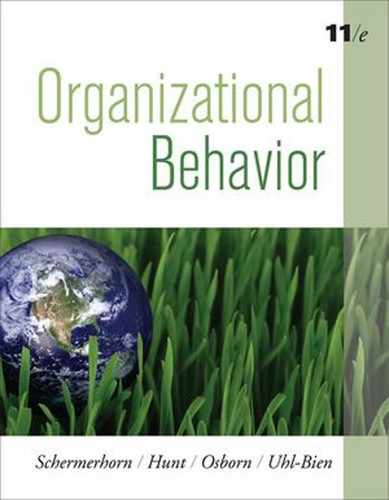



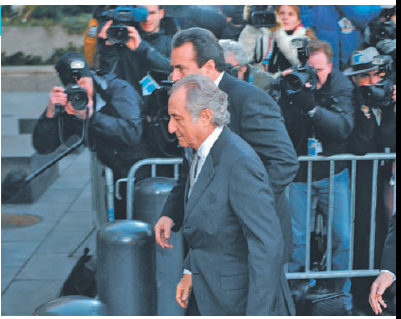
![Insights on the performance implications of three types of organizational cultures. [Source: Developed with permission from "The Organizational Culture Inventory," published by Human Synergistics International, Plymouth, Michigan.]](http://imgdetail.ebookreading.net/business/42/9780470294413/9780470294413__organizational-behavior-11th__9780470294413__figs__0103.png)


